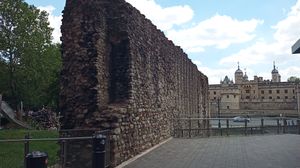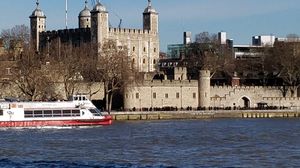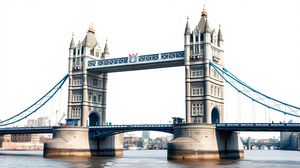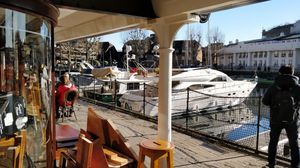
The Roman Wall in the City of London is a fascinating historical relic dating back to the Roman occupation of Britain. Originally constructed between 190 and 225 AD, this ancient fortification once circled the settlement known as Londinium. The wall formed the boundary of the Roman city and was a vital part of its defenses, stretching approximately three kilometers in length.
One intriguing fact about the Roman Wall is that it was primarily built in the wake of threats from across the English Channel. The Romans incorporated various building materials, including stone, tile, and rubble, which they bonded with a hard, lime-mortar mix. As you examine the wall, remnants of these construction methods are still visible today.
Sections of the wall are incorporated into later medieval buildings, which provides a unique architectural patchwork that tells the story of London's evolving layers. This blend of Roman brickwork with medieval stonework can be seen in places like the remnants near the Tower of London.
Archaeological studies have revealed fascinating insights into Roman life around the wall, including traces of roads and buildings that once thrived in this bustling ancient city. While much of Londinium was destroyed, these archaeological findings have been pivotal in understanding daily life in Roman Britain.
The remains of the wall have been preserved in several locations, with the most prominent sections on display being around Tower Hill, near Trinity Place. These remnants serve as a palpable link to London's distant past, inviting you to step back in time amidst the modern cityscape.

Making the Most of Your Visit:
Start your exploration from the Museum of London, as it offers a brilliant introduction to the Roman history of the city, including exhibits related to the Roman Wall. It's a good foundational stop for great context before you actually see the wall itself.
Look out for the section of the wall that's still visible in the underground car park of the Barbican. It's a bit hidden, but it gives a unique, raw perspective of the Roman Wall that many visitors miss.
Take a leisurely walk from Tower Hill to Aldgate, where you can trace the line of the original wall. Try to imagine how it would have defined and protected Londinium. You'll notice bronze plaques marking sections where the wall used to stand.
Near Tower Hill Underground Station, don't miss the well-preserved section of the wall with a tower that is partially reconstructed above the old wall itself. Combine this with a visit to the nearby church of All Hallows by the Tower, which also offers a glimpse into Roman antiquity.
If you've got time, join a guided walking tour. They sometimes follow the route of the Roman Wall, but make sure it's one that specifically tailors to Roman history rather than general city sights. It's a great way to hear interesting tales associated with each site.

Visiting Times & Costs:
The remnants of "The Roman Wall, City of London" are open to the public year-round, and many sections can be viewed at any time, as they are outdoors and located throughout the city.
There is no cost to view the Roman Wall itself; these historical sites are accessible to all without an entrance fee. However, certain nearby attractions, such as the Museum of London or other local museums, may have their own entrance fees.
In terms of accessibility, while many sections of the Roman Wall can be viewed from public spaces, some areas may require navigating uneven ground or steps, which could present challenges for those with mobility impairments. Specific locations, like the section of the wall in the underground car park of the Barbican, may have limited accessibility.

Address & Map:

Nearby:























